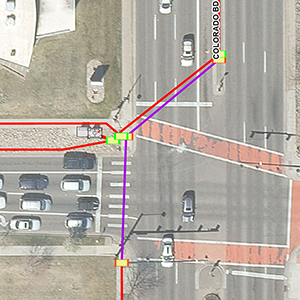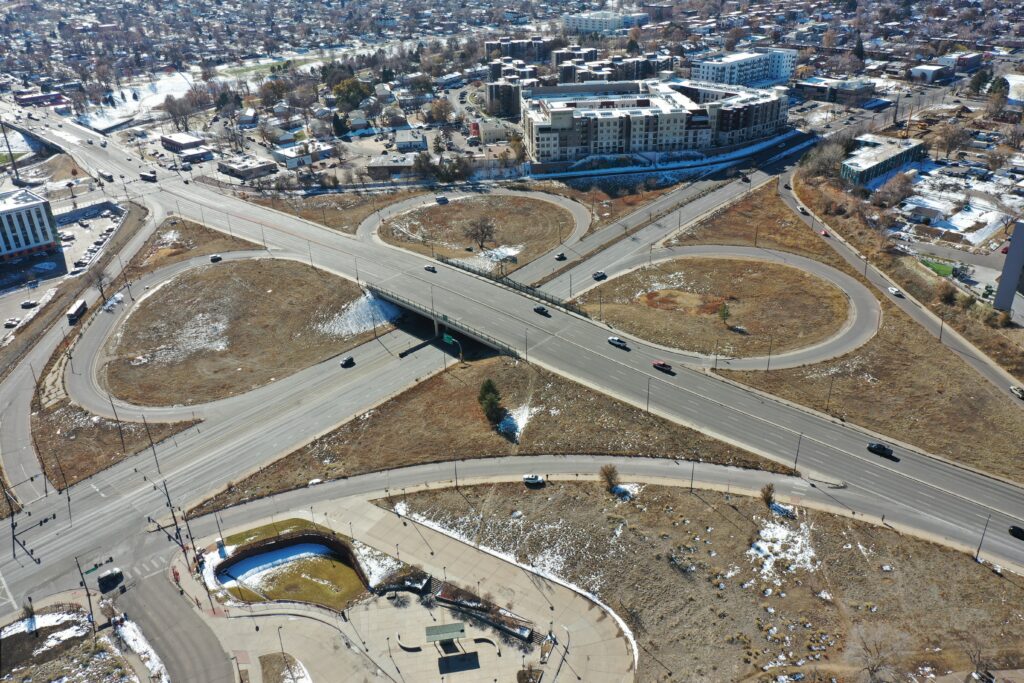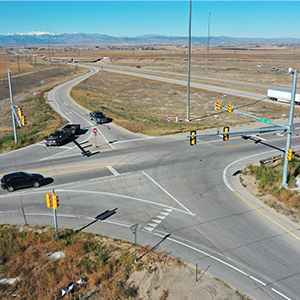US 160 SOUTH FORK TO WOLF CREEK TUNNEL FIBER AND WOLF CREEK PASS ADVANCED TECHNOLOGY DEPLOYMENT
Archuleta, Mineral, Rio Grande Counties, Colorado

Muller completed design on two projects that combine to extend fiber optic communications along US-160 from I-25, over Wolf Creek Pass and into the heart of CDOT Region 5. Wolf Creek Pass is in a remote, mountainous region of the state, with little mobile phone coverage. Receiving more than 400 inches of snow, it can be treacherous in the winter, and the long, downhill grade of US-160 on the westside of the pass can be treacherous in the summer for trucks experiencing overheated brakes. The goal of these projects is to improve communications and deploy devices that will improve monitoring of US-160, improve incident response times, and reduce crashes.
The first project involved 16 miles of new fiber optic backbone in mountainous terrain to connect to the Wolf Creek Tunnel on the critical US 160 corridor in southern Colorado. The design also included network equipment, electrical design, and facilities to light up 132 miles of dark fiber along US 160 between the Wolf Creek Tunnel and I-25 in Walsenburg. This project completed CDOT owned dark fiber optic cable between the Wolf Creek Tunnel control room and the CDOT control room at Hanging Lakes Tunnel in Glenwood Canyon. Hanging Lakes Tunnel (HLT) is the primary remote operations center for Wolf Creek Tunnel, and the resulting fiber optic cable and future network deployment provides reliable 24/7 remote operations of Wolf Creek Tunnel.
Following the first project’s success, CDOT Region 5 engaged Muller to plan and design an additional 29 miles of fiber over Wolf Creek Pass to Pagosa Springs and a deployment of technology along the pass to increase safety and improve incident response times.
This project included planning for ITS field device deployment and the CDOT ITS network architecture needed to develop minimum optical fiber strand counts along the corridor. The ITS planning process followed the federally mandated Systems Engineering Analysis process, and Muller engaged with CDOT Region 5 and CDOT ITS maintenance, operations, and traffic engineering personnel to ensure that the technology deployed on the pass would meet the goals of the stakeholders.
OWNER
CDOT Region 5
SERVICES
Traffic Engineering & ITS
Transportation Planning & Design
Stormwater & Floodplain Management
EXTERNAL LINKS
Statistics
8 Miles of Fiber Optic Lines | 44 ITS Device Sites





